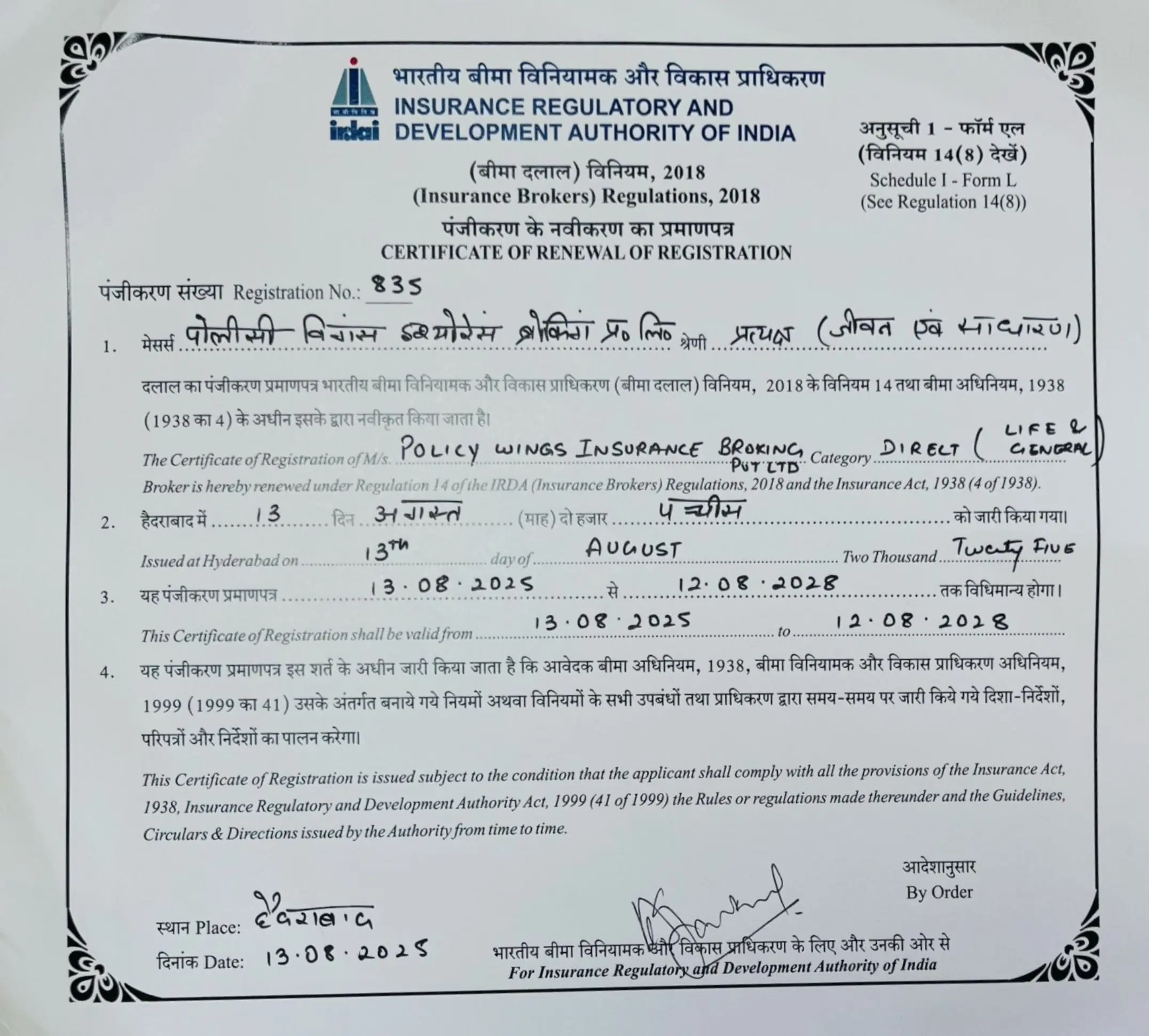Commercial Insurance: A New Business Starter Kit Entrepreneurship: Starting a new business is an exciting venture, not because of the easy things that lie ahead but for the many opportunities available. However, regardless of how new, there is always a type of risk that surrounds any new venture. One of the major ways you can shield your startups from certain unforeseen risks is through commercial insurance. Commercial insurance is tailored for your business. Hence, matters such as litigation, property damage, and many more will not be directed towards your till. So, here’s a detailed version of some need-to-know features of commercial insurance for startups and why it’s going to prove to be crucial to your future success. Do Startups Really Need Commercial Insurance? Startups are perceived to start with uncertainties like market risk, operational malfunctions, and even legal problems. It is at this point where commercial insurance will come in to protect your startup business venture. These are a few reasons why every startup has to invest in commercial insurance: Liability protection: Legally, your organization may be liable to the damage or injury being caused due to your product, services, and operations. The liability cost for the same is taken care of by commercial insurance by paying the legal cost. Covers of Properties under Insurance: In case your business operates at a small office or warehouse, it will surely be the lifeblood of any venture. This is where commercial property insurance covers buildings or premises of your business. It also covers equipment against theft, fire, or any acts of nature that will come without warning. Employee Coverage: If you have other employees then it is highly obvious that in most places you will be needed to have; that is, you should ensure that you have worker’s compensation coverage. Such a feature guards not only your employees but your business as well in case of injuries among other workplace injuries against costs related to medication and lost wages. Business Continuity: Recovery from some unforeseen incident such as an act of nature will be easier with the insurance cover. With business interruption insurance, there would be a loss from idle time, so you can continue operating the business or get back into full production much sooner. Compliance: Depending on your business and where you are located, most startups are strictly necessary to have some forms of insurance, such as workers’ compensation or liability coverage. Types of Commercial Insurance Every Startup Should Consider Knowing the types of insurance policies will help you make up a decision as to what fits your needs best. Here are some of the most common ones: General Liability Coverage General liability insurance covers court costs and damages as incurred if the law finds your business liable to injuries of persons or property and claims for personal injury. All start-ups require general liability insurance since small and apparently inconsequential incidents can blossom into costly lawsuits. Example Application: If your customer, who eventually becomes your company, slip and falls at your office, then your general liability insurance will pay up their medical bills as well as any court case against your business. Commercial Property Insurance Commercial property insurance protects the physical business assets of your company, covering such items as buildings and buildings structures, equipment, and inventory. Common causes of damage include fire, theft, vandalism, or any form of natural disasters. Example: When there is a fire break in your office, it is commercial property insurance that will indemnify the repairs or reconstruction. Errors & Omissions Insurance Also Known as Professional Liability Insurance Any start-up professional, or consulting firm, should ensure that it acquires the most important form of insurance, for instance professional liability insurance; an example here is a consultant of lawyers, for instance accountants and the like because professional liability covers claims owing to negligence, misrepresentation, and/or incomplete work. Example: When the client tells you that they lost their money on the strength of your services, professional liability insurance will provide legal representation and settlements. Workers’ Compensation Insurance If you have employees working for your business, you are legally obligated to carry workers’ compensation insurance. That will help cover treatment and lost income and provide rehabilitative services should one of your employees be hurt at work or off work. For instance, if one of your employees suffers a work-related injury, lost wages and costs you incur while absent from work recovering from time lost will be compensated under workers’ compensation insurance. Business Interruption Insurance Business interruption insurance reimburses you for income and operating costs you are unable to earn and sustain when your business is required to close for a time due to an unforeseen event occurring to your business, such as a hurricane. Example: If flood makes your office uninhabitable and you cannot do business there for several weeks, business interruption insurance will pay lost revenues and operating expenses that occurred during the time the business was put on hold. Cyber Liability Insurance To cyber liability insurance, startups require it, especially where they have to deal with sensitive information about customers. This cover avails itself in any loss following a break in data, cyber attack, and any other form in connection with the internet. Case in point: If your system hacks into public customer information, cyber liability insurance will take care of the communication cost incurred to the parties involved, lawyer fees, and fines a breach attracts. Factors of Choosing Commercial Insurance : Choosing the right sort of commercial insurance for your startup can prove pretty daunting. Of late, a few essential factors one needs to consider during a choice have been discussed below, keeping in view the following. Industry-Specific Risks: Every industry will, of course, have different risks. For example; the risks that a cyber liability insurance will involve for a tech start up will probably be much more than those in a general liability cover needed for
...Homepage > Articles > Commercial Renovation Insurance Undertaking a commercial renovation project is a significant investment for any business. Whether renovating an office space, renovating a retail store, or renovating a restaurant, the process can be complex and potentially risky. An important part of managing these risks is having the right insurance. In this comprehensive guide, we delve into the world of commercial renovation insurance, examining the types of coverage available, the importance of insurance for renovation projects, and how to choose the right policy for your needs. your specific needs. https://www.youtube.com/watch?v=DiO2Im1G4Hk What is Commercial Renovation Insurance Commercial renovation insurance is a niche insurance product specifically designed for businesses involved in renovation or remodeling projects. These policies are carefully crafted to address the unique risks and liabilities that often accompany such endeavors. Let’s dig deeper into the complexities of commercial renovation insurance to gain a comprehensive understanding of its purpose and components. Property Damage Insurance: Renovation projects can be complex and disruptive, often involving the removal or modification of existing structures. This leaves the property being renovated exposed to various risks, such as fire, theft, vandalism, and even natural disasters. Commercial renovation insurance typically includes coverage for damage or loss to the property. This insurance is called “builder’s risk insurance” or “construction insurance”. It extends protection not only to the building structure but also to materials and equipment located on the project site. Liability protection: Liability risk is another major concern in renovation projects. Commercial renovation insurance provides protection against claims for bodily injury or property damage that may arise after renovation work. For example, if a visitor, worker or passerby suffers an injury or property damage directly related to renovations, this insurance will cover medical expenses, legal fees and settlements. there may be. This aspect of the policy is called “general liability insurance.” Coverage for Contractor Equipment: Remodelling projects rely heavily on specialised equipment and tools. Commercial renovation insurance typically includes coverage for contractor equipment and tools used during the renovation process. If a contractor’s tools are stolen, damaged, or lost on the job site, this insurance ensures that the contractor will be compensated for the cost of repair or replacement. Worker’s Compensation: If you have employees or subcontractors working on your renovation project, workers’ compensation insurance is essential. It provides coverage for medical expenses and lost wages for workers injured while on duty. Compliance with workers’ compensation laws is often required to ensure that workers are properly protected. Professional Liability Insurance: In some cases, businesses may hire architects, engineers, or other professionals for their renovation projects. These professionals are held to high standards and any errors or omissions on their part could result in financial loss. Commercial renovation insurance may include professional liability insurance, also known as errors and omissions insurance, to protect you against claims of professional negligence or malpractice by these professionals. perform. Pollution liability insurance: In rare cases, renovation projects may uncover environmental contaminants such as asbestos or lead. Pollution liability insurance may be included in a commercial renovation policy to cover costs associated with environmental cleanup and pollution-related liability claims. Types of Coverage General liability insurance: This is a basic part of commercial renovation insurance. It protects against claims for bodily injury or property damage that may arise during a renovation project. For example, if a visitor to your construction site is injured after a slip and fall accident, general liability insurance will cover medical expenses and possible legal fees. Builder’s Risk Insurance: Builder’s risk insurance, also known as construction insurance, provides coverage against damage or loss caused by the property being renovated. This includes the building structure itself as well as on-site materials and equipment. Common risks covered include fire, theft, vandalism, and natural disasters. Contractor’s Equipment Insurance: This policy specifically covers the contractor’s equipment and tools used during renovations. If a contractor’s tools are stolen or damaged on the job, this insurance will cover repairs or replacements. Workers’ compensation insurance: If you have employees or subcontractors working on your remodeling project, workers’ compensation insurance is important. It covers medical expenses and lost wages for workers injured on the job. Compliance with workers’ compensation laws is often mandatory. Professional liability insurance: Also known as errors and omissions insurance, this coverage is essential if you are hiring an architect, engineer, or other professional for a renovation project. It protects against claims of professional negligence or malpractice that result in financial loss. Pollution liability insurance: In some cases, renovation projects may uncover environmental contaminants such as asbestos or lead. Pollution liability insurance covers costs associated with cleanup and pollution-related liability claims. The Importance of Commercial Renovation Insurance Now that we’ve explored the different types of insurance available, let’s look at why commercial renovation insurance is important for your project: Renovation projects inherently have risks, such as accidents, property damage or unforeseen structural problems. Insurance provides a safety net, reducing the financial burden on your business in the event of an incident. Many jurisdictions require businesses to carry certain types of insurance, such as workers’ compensation insurance. Failure to comply with these regulations may result in fines and legal consequences. Renovation projects often require significant investments in labor, materials, and equipment. Insurance protects your financial interests, ensuring that unforeseen events don’t cripple your budget. If you work with contractors, subcontractors, or lenders, they may require proof of insurance before committing to your project. Having the coverage you need can help you secure your policy and finances. Peace of mind: Knowing that you have adequate insurance coverage can give you peace of mind throughout the renovation process. This allows you to focus on project success instead of worrying about potential failures. Choosing the Right Commercial Renovation Insurance Choosing the most appropriate commercial renovation insurance policy for your project requires careful consideration. Here’s a step-by-step guide to help you make an informed decision: Step 1: Assess your project’s unique risksEvery renovation project is unique, as are the risks associated with it. Start by performing
...Latest Blogs
Introduction Group personal accident insurance India has become increasingly essential for employers wanting to protect their workforce against unforeseen incidents as there is a high chance of evolving risks and on site injuries where insurance has gained attention as a helpful inclusion in employee benefit packages across organizations of all sizes. Group Personal Accident Insurance Group personal accident insurance (GPAI) is a policy that covers employees altogether against accidental death, permanent disablement and temporary disablement (in many cases). Customised for a group like company staff or association members where this insurance offers financial protection when there is an unpredictable accident. In India where workplace and travel related incidents are common, GPAI provides crucial coverage to lower economic fallout. Significance of Group Coverage for Employers Cost Effective Premiums: Group schemes influence economies of scale which is better than individual accident plans. Insurers usually offer lower per person premiums under group arrangements which makes it inexpensive for employers while increasing employee security. Simplified Administration: Holding on to a single insurance policy instead of numerous individual ones simplifies HR operations. PolicyWings clients can appreciate how group personal accident insurance decreases paperwork, eases onboarding and makes claims processing quick because of systemised coordination. Moral and Competitive Corner: In a competitive job market offering accident insurance shows that an employer values employee well being. This not only increases morale but also enforces retention and attracts talent by differentiating compensation packages. Benefits of Group Coverage for Employees Financial Security after an Accident: If an unfortunate accident results in permanent disability or death then the lump sum compensation eases financial load on families. Access to Interim Income Support: Some policies include temporary total or partial disablement cover which provides income in case of an employee being incapacitated for a period. This type of benefit maintains employees and their families during recovery. Quick Claim Processes: Group policies usually have standardized claim mechanisms which are managed at the employer level which allows employees to file claims easily without navigating complicated individual procedures. What Employers Should Consider When Selecting a Plan Extent of Coverage: Group personal accident insurance has different offers. Employers must check if the policy includes death, permanent and temporary disability and sometimes, medical expenses or daily hospital cash. Wider coverage has prices slightly higher but provides comprehensive protection. Coverage Limits must be Adequate: having adequate coverage limits per employee is essential. Compensation should be relevant to local cost of living, typical wage levels and potential liabilities from accidents. Not insuring rightly could leave families inadequately supported. Inclusions and Exclusions: Policies often exclude risky activities (for example extreme sports or non work related accidents). Employers have to review the list carefully to make sure that the coverage matches employee real world risks particularly in industries like logistics, manufacturing or field services. Record of Claim Settlement: Evaluating the insurer’s reputation for claim processing in India is essential as well. A quick transparent claim experience increases employee trust in the benefit and it also reinforces its value. Add On Features: Optional riders like repatriation of remains, ambulance charges, funeral expenses or education benefits for dependents can enhance policy utility a lot. It’s optional but benefits are usually appreciated by employees. Clarifying Common Concerns One common doubt is whether GPAI overlaps with other employee insurance coverage. In India, many companies provide group health and life insurance and still those policies may not fully cover accidental disability or death arising from nonhealth related causes. Accident specific coverage adds an additional layer of protection customised for sudden and unintended events. Another doubt is whether smaller organizations can afford group personal accident insurance. Yes, they can. Many insurers provide entry level group plans that limit the amount of costs while providing essential protection and they are flexible as well. As the workforce evolves the coverage tiers can balance accordingly. Improving Your HR Benefits Package Converting group personal accident insurance into overall employee well being frameworks strengthens employer branding. When put together with group health, life and wellness offerings then GPAI is a complete trio of risk protection. This strengthens policies marketed under “employee benefit insurance”, “corporate accident policy”, or “accident insurance for employees India”. And proactively communicating these benefits during orientation and periodic HR outreach helps employees understand them which improves perceived compensation value. Advice for Maximizing ROI on GPAI Conduct a risk assessment to adjust coverage to your workplace profile Survey employee concerns around security and financial uncertainty Compare insurer quotes focusing on claim settlement ratios and coverage scope Educate employees on policy particulars especially the claims process Review policy annually to customise benefits or coverage limits as needed Conclusion Group personal accident insurance India offers a cost efficient, morale boosting and administratively effective way to add adequate protection for employees. In circumstances where accidents can ruin lives and livelihoods, this coverage plays a critical role. For employers it’s not just an expense but it’s an investment in workforce resilience and employer brand differentiation.
...Introduction The best thing about running a business is making profits but it’s equally important to protect what you’ve built. You spend years setting up your workplace, what if it gets all damaged overnight by a fire accident or maybe an earthquake? It’s not even easy to think of such a situation. This is why you need commercial property insurance. Sadly, many businesses underestimate the importance of property insurance, because they keep thinking that nothing so bad will happen. But this is life. Risks are unpredictable. One incident and it may cost you lakhs or even crores. Only with the right coverage through commercial property insurance plans you can protect your hard-earned investment. We are here to help you understand why every business, regardless of size, must have commercial property insurance. What is Commercial Property Insurance? It’s a type of insurance that protects your valuable business property against damaging risks like fire, theft, natural disasters or anything that causes loss of property. Not just the building, it also covers the assets inside it like equipment, tools, machinery, furniture, raw materials, finished goods etc Let’s suppose a fire accident happens in your office and it damages your building and destroys your equipment. Now, commercial property insurance will cover the cost of repairs and replacements. Yes, the load will not fall on your pocket. Without insurance, all your savings will go into fixing your office or you might even have to take loans. Why is Property Insurance so Important for Businesses? It doesn’t matter if you own a small shop or a huge factory; it’s your business and your operations rely on it. Damage to the property directly disrupts your business and impacts your income. Property insurance is essential because: It protects all your physical assets in the workspace. It makes sure the business continues even after an accident. It provides the much-needed financial stability during tough times. It doesn’t let your working capital or savings be wiped out for repairs or replacements. In short, without property insurance, all operations will come to a halt after a single bad event. What Do Commercial Property Insurance Plans Cover? While all insurance providers offer different coverage, here’s what most commercial property insurance plans protect from: Buildings and Structures– Workspaces like corporate offices, large warehouses, showrooms and factories. Furniture and Fixtures– All your desks, chairs, shelves and other furniture that’s set up. Machinery and Equipment– Tools & equipment used for manufacturing, heavy machinery and even computers/laptops. Stock and Inventory– Raw materials and finished goods present in the facility and even the goods in transit. Loss of Rent/Income– In case your property becomes unusable due to the damage caused. Natural Disasters– Damaging disasters like heavy floods, earthquakes, storms, large cyclones etc. Man-Made Risks– If there’s fire, theft, riots, strikes or other intentional damage. This is why commercial property insurance plans are adaptable to the different industries it is being taken for. Benefits of Commercial Property Insurance These are the top reasons that convince you to get your property insured: Protection Against Financial Loss: If a disaster, whether natural or man-made, can cause huge financial damage. With insurance in place, there’s no need to pay for any repairs and replacements from your pocket. Business Continuity: When operations are disrupted, it can lead to loss of income. Thankfully, many policies cover the loss of income, thereby making sure that your cash flow isn’t completely stopped. Peace of Mind: The assurance that your property and assets are protected lets you focus on growth with a relaxed mind and you don’t stay worried about unexpected situations. Covers More Than Just Buildings: Remember that insurance isn’t limited to just the physical building. It also covers your finished and raw stock, machinery, furniture and sometimes even electronic data (add-on benefit). Improves Business Credibility: Insured businesses are preferred by banks, investors, and even clients because they seem more stable and reliable. If you have property insurance, it means you take your risks seriously. Who Needs Commercial Property Insurance? Honestly, any business that owns or rents physical space should consider getting it. They could be: Retail Stores & Showrooms– To protect their inventory and display stock. Warehouses– To secure all the goods and raw materials stored in the facility. Manufacturers– They need it to protect their machinery and production equipment. IT Companies– It covers all the office equipment like laptops, servers etc. Restaurants & Hotels– Insurance ensure the kitchens, furniture, interiors and related assets are secure. Not just these sectors, even small businesses like salons, coaching centers and workshops can go for commercial property insurance plans, because risks are there for businesses of all sizes. Common Risks Businesses Face Without Insurance Not having commercial property insurance means your business is exposed to some serious risks like: You have to pay for heavy repair or replacement costs from your own pocket. Customers may go to another business because of operational shutdowns. Risk of bankruptcy, especially if the damage is not easy to recover from. You might struggle with banks or investors due to a lack of credibility now. One accident, maybe due to fire, flood or a major robbery, can affect your years of effort if there’s no insurance. How to Choose the Right Commercial Property Insurance Plan There are a few things that you must keep in mind when comparing commercial property insurance plans: Assess Your Assets– Make a detailed and proper list of all the property, stock and equipment you want to secure. Understand What’s Included and What’s Not– Remember that policies may not cover all kinds of damages. Check Add-ons– You can opt for extra benefits like electronic equipment cover, goods in transit or natural disaster extensions for stronger coverage. Compare Premiums vs. Coverage– Buying the cheapest is not the solution. Focus on value for money. Reassess Regularly– Do update your coverage as your business grows so you’re not underinsured. For example, a sudden electrical fire happens in a small textile factory that damages machines worth ₹37 lakh.
...Introduction After working almost all your life, raising a family and saving for the future, seniors just want to live peacefully and enjoy a comfortable time with their dear ones. But one sudden medical emergency can come with a bill of lakhs and knock out your savings. This scary stress can be avoided by getting a Senior Citizen Health Insurance. Medical care is becoming more expensive and there are often increased health risks with age. But with health insurance for senior citizens, you get financial stability and peace of mind. Here we will discuss why insurance for senior citizens is so important, the benefits it offers and what really makes the best health insurance policy for seniors. Why Do Senior Citizens Need Health Insurance? As we come closer to our retirement years, our bodies are old enough to become naturally more vulnerable to health issues. Routine checkup and certain medications are like part of life and sometimes, there may also be hospitalization. Without proper coverage, these medical expenses can eat away the money that you saved for daily living or even emergencies. Below are some reasons why you must get senior citizen health insurance: Rising Healthcare Costs: Treatment costs in India are growing even faster than general inflation. A simple hospital stay can cost in lakhs and it’s not easy to pay this amount out of pocket. Increased Risk of Illness: There is always a higher possibility of senior citizens suffering from chronic diseases like diabetes, BP issues, heart problems etc. Limited or No Income: Most retired people rely on pensions, savings, or family support for their expenses. Now, a huge medical bill can disturb the financial planning. Peace of Mind: When you have a policy, you can focus on getting treatment and recovery instead of financial stress. Challenges Seniors Face Without Insurance The risks of not having insurance would actually make you understand the true value of insurance: Savings Get Wiped Out: You get hospitalized one time and you’re slapped with a bill of several lakhs. This leaves very little for daily needs. Compromised Treatment: Due to a lack of funds, some families may even delay or choose cheaper alternatives, which affects the recovery of the patients. Burden on Children: When parents don’t have the scope to pay for the treatment, the medical costs fall on children. This only adds up to an already difficult time. Loss of Independence: When elders feel they are dependent, it hurts their dignity as well. Not having senior citizen health insurance means a missing safety net. It can turn your life upside down in medical emergencies. Benefits of Senior Citizen Health Insurance Now we will look at the different ways in which health insurance plans for senior citizens actually help: Hospitalization Coverage: Room rent, doctor’s fees, surgeries and even treatment medicines, a senior citizen health insurance policy takes care of it all. This is such a lifesaver because hospital bills are often a lot higher than expected. Pre and Post-Hospitalization Expenses: Most health insurance plans also cover the cost of prescribed tests, medicines necessary before admission and follow-up visits once the patient is discharged. Cashless Treatment: Most insurance providers have tie-ups with hospitals where seniors can get their treatment without having to pay upfront. Instead of arranging for funds during emergencies, patients can rush for timely medical care. Coverage for Pre-Existing Diseases: Policies designed for seniors usually don’t make them wait for long. Rather, the coverage starts as early as in 1-2 years. Ambulance Charges: The policies also include emergency ambulance expenses. It saves families from sudden expenses that come from the pocket. Day-Care Procedures: There are many modern surgeries that can be completed within 24 hours and don’t require hospital stays. These treatments are covered by insurance for senior citizens. Mental Health Coverage: It’s not only physical health that suffers with age but also mental well-being. This is why some policies also include psychiatric consultations and therapy sessions. Tax Benefits: Section 80D of the Income Tax Act makes senior citizen health insurance tax free and this helps reduce overall tax liability. Key Features to Look for in the Best Health Insurance Policy for Seniors All policies are unique in some way. One may have something the other doesn’t. Look for these features when choosing the best health insurance policy for seniors: High Coverage Amount: The sum insured has to be good enough that it covers major surgeries and hospitalization. Low Waiting Period for Pre-Existing Diseases: A Shorter waiting period means you are eligible to get coverage for your health conditions sooner. No Claim Bonus (NCB): If things go well and you don’t make a claim in a year, certain insurers will also increase your coverage. Cashless Hospital Network: A wide network of hospitals gives patients a higher chance of access to treatment, even in their nearest hospitals. Reasonable Premiums: Though premiums are generally higher for senior citizens but you can always compare different health insurance plans. It gives the best balance between price and coverage. Critical Illness Rider: Some policies allow you to take add-ons for severe conditions like cancer, stroke or organ failure so you get the best treatment. How to Keep Premiums Affordable The high cost of premiums is of the most common concerns about insurance for senior citizens but you can make them more affordable by following these tips: Buy Early: Purchasing early means you have to pay lower premiums while also getting more years of coverage. Opt for Higher Deductibles: When you agree to pay a small part of the claim, it can actually reduce your premium amount. Compare Multiple Plans: You don’t have to settle for the first option because helpful platforms like Policywings help you compare the benefits and costs of different policies side by side. Look for Family Floaters When Suitable: In some cases, getting a family floater policy can also serve the purpose. Individual plans can be more costly. Reducing the Family’s Burden with Senior Citizen Health Insurance
...Introduction Life insurance is hands down one of the smartest steps you can take to secure your family’s financial future. However, the one big question is whether to go for a life insurance term plan or choose from traditional life insurance plans (endowment or whole life policies). People usually find them similar since they’re both part of life insurance but they really work very differently. While one plan is all about providing protection, the other combines double benefits of insurance and savings. For most of us, i could be really confusing to pick between both the options. So let’s make it simple for you to understand and decide. What is a Term Insurance Plan? A life insurance term plan is the most straightforward form of insurance out there. You just need to pay regular premiums and if something happens to you during the policy term, the insurance company will give your family a fixed sum assured. The key points about term plans are: Premiums are low but coverage is high. There’s no maturity benefit. Basically, if you survive the policy period, you don’t get any money back unless you have signed up for the “return of premium” plan. Ideal for those who want maximum financial protection but can’t pay a lot. For example, you may be just but with a life insurance term plan you already have coverage worth ₹1 crore for just ₹10,000 per year. Honestly, this makes your family’s lifelong security cheaper than a Netflix subscription. What is Traditional Life Insurance? Traditional life insurance plans offer protection and savings both. Under plans like endowment or whole life policies, you pay regular premiums. In return, along with life cover, some part of your money also gets invested or saved. As the term ends, you or your family receives a maturity benefit. Important points about traditional plans: The policyholders get both insurance cover and savings/investment returns. For the same amount of coverage, premiums are higher compared to term plans. These plans are highly preferred by those who seek sure-shot returns along with insurance. Now for getting ₹1 crore coverage in a traditional plan, you might pay ₹1,00,000 yearly or even more, which is much higher than a life insurance term plan. Quick Comparison Between Term Insurance and Traditional Life Insurance Feature Life Insurance Term Plan Traditional Life Insurance Plans Coverage Low premium but high cover Lower cover but high premium Premium Typically affordable (₹10k–15k for ₹1 crore) It’s expensive (₹1 lakh+ for ₹1 crore) Savings/Investment Only protection and no returns Insurance with savings both Maturity Benefit None. Though you might get with return of premium plan Yes, you get maturity value or bonuses Flexibility Simple and easy to understand More complex and less flexible Best For People who seek maximum security for their family People who prefer cover + savings both Advantages of Term Plans High Coverage at Low Cost: For a small and affordable premium amount you get a large cover which is perfect if you want to protect your family’s lifestyle. Easy to Understand: There are no hidden conditions or difficult investment terms. Just a simple insurance. Flexibility: To add more protection, you can also buy riders like critical illness cover or accidental death benefit. Peace of Mind: It feels great to know that your family is financially secure even if you’re not around. Limitations of Term Plans You do not get anything (no returns) if you survive the term. You need to invest separately to build your wealth. Advantages of Traditional Life Insurance Insurance + Savings: You get the best of both worlds- protection and future savings. Guaranteed Returns: Plans like endowment and whole life policies are known to provide assured maturity benefits. Good for Conservative Investors: Traditional life insurance plans are a safe choice compared to the risky market-linked products. Limitations of Traditional Life Insurance Very high premiums for providing such low coverage. Returns are not that great compared to other investment options available like mutual funds or PPF. Often, there are tricky terms, conditions and bonus rules that may just confuse the buyers. But Which is Better for You? Ok, so the answer mainly depends on your goals. You must choose a life insurance term plan if: You seek maximum financial protection for your loved ones. You are young and looking for high coverage but at a low cost. You don’t want to combine insurance and investment. You want to invest your money separately like in mutual funds, stocks or maybe FDs. You must choose traditional life insurance plans if: You want a safe savings option with built in insurance. You want to receive guaranteed maturity benefits. You don’t want to separately manage investments. You don’t mind lower coverage but want steady returns. Let’s take an example of two people. Person A buys a life insurance term plan for ₹1 crore. He pays ₹12,000 premium per year and invests the rest of his money (₹88,000) in other avenues (mutual funds and FDs). 20 years later, besides having full protection, he has also built wealth from investments. Person B buys a traditional life insurance plan with ₹1 crore coverage where he gives a premium of ₹1 lakh annually. While he does get insurance and guaranteed returns at maturity, he doesn’t have the flexibility to invest his funds separately. At the end of 20 years, Person A has both a high cover and a considerable investment. However, person B does have cover but only a smaller fixed maturity benefit. Common Misconceptions People Have “Term plans are a waste because you don’t get money back.” Well, you can think of it like car insurance. Here, you pay to get peace of mind. If nothing happens, it’s already good news! “Traditional plans always give the best returns.” Not always. While returns are safe but they are also lower compared to other investment tools. “I should only choose one.” Actually, you can also combine both. Get a term plan for protection and maybe
...Introduction After years of working so hard and saving & planning for everyone else, your retirement years have to be just about you, no? It’s finally time to live on your own terms. However, the question is whether your savings alone would be enough to help keep up with inflation or emergencies. Now, imagine getting the best of life insurance protection and long-term investment growth together. This is possible with Life Insurance Retirement Plans (LIRPs). This retirement insurance plan ensures your loved ones are protected even after you and your money keep growing for the years ahead. Whether you’re just starting your financial journey or you’re close to your retirement, an LIRP offers a structured and tax-efficient way to create financial freedom for the years when you should be relaxing. Read on to know how it works! What is a Life Insurance Retirement Plan (LIRP)? It’s an efficient retirement insurance plan that provides both life coverage and savings. In this, you are required to pay regular premiums. A part of it goes toward your life cover and the remaining gets invested to build more money over time. All this accumulated amount can be later used as your regular income during retirement. Basically, an insurance for retirement is combined with a financial plan that continues to safely grow your wealth. How Does a LIRP Work? LIRP is a flexible and long-term tool for dual benefits. Here’s how this brilliant retirement insurance plan functions: Payment of Premium: You pay a fixed monthly or annual amount. Dual Purpose: The insurance company gives part of the premium to life insurance and invests the remainder. Cash Value Growth: The investment part of your plan grows into cash value over time and it’s also tax-free for as long as it stays invested. Withdraw or Borrow: Once enough savings have grown, you can withdraw or borrow from this amount to fund your retirement years. Death Benefit: In case something unfortunate happens to you, your family still receives a death benefit. Benefits of a Life Insurance Retirement Plan When it comes to offering advantages, the retirement insurance plan goes beyond a traditional life insurance policy. Here’s how: Double Benefit of Protection + Savings It offers life cover for your loved ones and a steadily growing savings fund for you. Ultimately, there will be financial relief during and after your working years. Tax-Deferred Growth The invested amount continues to grow without any immediate tax deductions. You will only be charged taxes when you withdraw. Hence, your investment compounds efficiently. Withdrawal Flexibility The regular pension schemes put a limit on when and how much you can withdraw. But with insurance for retirement, you have more control. You can always access your funds when needed. Guaranteed Returns with Low Risk LIRPs are great for those who prefer stability over risk. They offer predictable returns and keep your capital protected. This is a very reassuring feature of retirement insurance for seniors. Lifetime Coverage You continue to enjoy life cover benefits even after getting retired. If you see it, you secure financial support for your family while your savings also continue to grow. Why LIRP is Becoming Popular in India Today, both life expectancy and healthcare costs are rising and this is pushing people to plan ahead. When you have a retirement insurance plan, it creates a financial shield for you that protects you from the stress of market fluctuations. A lot of people in India are opting for these plans because: They come with the dual advantage of protection and wealth creation. The payout amount is flexible and can be used for both healthcare purposes and regular living expenses. The attraction of the plan increases even more with the tax benefits under Sec 80C and 10(10D). In a nutshell, a LIRP assures that you have sufficient savings for yourself, which has always been a matter of concern among retirees. LIRP vs. Traditional Retirement Plans While both options help you prepare for retirement, they don’t work the same way. Here’s a quick comparison that highlights how LIRPs are different from traditional plans: Feature Life Insurance Retirement Plan (LIRP) Traditional Pension/Retirement Plan Protection Double power of life cover + savings The usual focus is only investment Returns Depending on the plan, it could be market-linked or fixed Fixed and often lower Tax Benefits You get the advantage on both premiums and maturity Limited tax benefits Flexibility You are allowed to make partial withdrawals or take loans Limited access to the funds Ideal For Those who want long-term growth and safety Individuals who don’t prefer risk Who Should Consider a LIRP? These individuals can trust the Life Insurance Retirement Plan and go for it: Working professionals: Those who want to start their savings journey early. Business owners: The ones who prefer flexible investment options. Retirees or near-retirees: People who seek low-risk income along with life cover benefits. Parents or couples: LRIP is very useful for planning long-term family security. In fact, it’s also an excellent choice for those who want retirement insurance for seniors. Why? Because the returns are constant and risk exposure is minimal. Important Things to Do Before Buying Before you decide to go on with a retirement insurance plan, do consider these points: Carefully go through the terms of the policy, charges involved and the lock-in period. Compare the offerings of different insurers. Also pay special attention to their claim settlement ratios. Calculate how long you can keep your money invested to make the most out of the plan. Check if your preferred policy will help you with your future financial goals. It’s totally fine if you have a little extra time before selecting a plan. At least there won’t be any confusion later and you’ll be covered for life. Conclusion A Life Insurance Retirement Plan (LIRP) is a very smart way to build financial independence. It actually keeps you secure through every stage of life. Whether you’re starting early in your career or planning closer to retirement,
...Introduction Buying a car is so exciting. The new smell, the smooth rides. Everything about it seems worth it except for car insurance. Many people see it as a compulsory expense that brings a burden to the wallet every year. However, you just can’t skip it because it’s mandatory in India to have insurance for car. Just by following a few smart and completely legal steps, you can actually cut costs and still enjoy solid coverage. In fact, many car owners are already saving thousands every year! While the internet is full of jargon-filled advice on “how to get the cheapest insurance for car”, we will break it down for you in a very clear and practical way. Why Car Insurance Premiums Feel So Expensive Anyone who has ever renewed their car insurance can relate to the feeling after seeing the premium amount. Every time it seems higher than the previous year, even if you didn’t make a single claim. Here are the reasons why this happens: Rising repair costs: Modern cars have advanced technology. There are smart sensors, digital systems and fancy paint jobs. One small accident and it costs thousands to fix. This makes insurers charge higher premiums. Frequent accidents: India has crowded roads and a lot of traffic, which increases the risk of accidents. When more people make claims, insurance providers spread that burden across all their customers. Add-ons and extras: So many policyholders also buy add-ons without realizing that they will increase the premium. Yes, some features really come in handy but not all of them are necessary for you. Risk-based pricing: Factors like your age, driving history, location and car model also decide the amount. For example, Delhi usually has heavy traffic and thus, higher premiums. All this together can burn a hole in their pocket. But if you be smart about your choices, you can still find the useful and cheapest insurance for car. How to Legally Cut Down Your Car Insurance Costs Premiums feel so heavy on the pocket. But is there any way to reduce them while securing important coverage? Just with perfectly legal ways, you bring down the premium for insurance for car and still stay fully protected. No tricks no loopholes. Compare Before You Commit Even when you book a hotel room, you compare prices. Similarly, you shouldn’t settle for the first quote of insurance for car you get. For the same car, different companies offer different rates and benefits so do a little research. Why it matters: You may dismiss a small difference in premium but counting it all over 5–10 years of owning a car, it can add up to be a big amount. How to do it: Simply use online comparison websites and get multiple quotes. Not just the premium, but also look at what is included and what’s not and customer reviews. Pro tip: The lowest premium is not what you need. Sometimes the cheapest insurance for car may not include roadside assistance or cashless garages that are actually so useful. Seek value for the price. Go for a Higher Voluntary Deductible Many car owners also overlook deductibles. It’s basically the part of a claim you pay before the insurance company comes with its benefits. When you opt for a higher voluntary deductible, you agree to contribute a bit more for a claim. Hence, your insurer gives you a discount on premiums. For example, if you increase your deductible amount from ₹1,500 to ₹4,500, your annual premium could drop by 10–25%. When it works best: If you’re a driver with a good on-road history, this option would suit you. But set your deductible to an affordable amount; otherwise, it becomes a financial strain during accidents. Keep a Clean Driving Record Driving safely is surely the simplest and healthiest way to reduce your car insurance premium. It’s a reward by insurance companies to low-risk drivers because they’re less likely to make claims. Benefits of a clean record: No Claim Bonus (NCB): The year you don’t make a claim, you earn a very good discount. Better premium offers: Your insurer may also give you better rates at renewal. Peace of mind: Obviously, fewer accidents mean overall fewer hassles. Even just by avoiding traffic fines or rash driving, you are seen as a “low risk” driver that brings you closer to the cheapest insurance for car. Choose Add-Ons Wisely Insurance companies will often tempt you with add-ons. Options like zero depreciation cover, engine protection etc are attractive and useful but many of them might just unnecessarily increase your premium. Good add-ons: If yours is a new car, get a zero depreciation cover. If you live in flood-prone areas, get engine protection. Take in the most relevant and practical ones. Not always needed: Add on like roadside assistance may already be offered by your car manufacturer. Similarly, there may be other avoidable ones. Don’t buy all the extras available and rather customize your insurance for car so it fits your lifestyle to reduce your premium significantly. Install Anti-Theft Devices and Safety Features Insurers love cars that have harder to steal features installed. If your vehicle has airbags, alarms, tracking devices or other safety features, it’s going to get you discounts. Why it works: When there’s more security and a lower risk of theft and accident, it also means less financial risk for insurers. How to benefit: If you install an ARAI-approved anti-theft device in your car, some insurers may immediately lower your premium as soon as you give them proof of installation. This is how you can ensure cheaper premiums but also more peace of mind for a safer car. Bonus Tips for Bigger Savings We discussed the five main ways to reduce your premium amount. Here we have a bunch of few more tricks that will help you save money on your car insurance: Renew on time: Late renewals may also lead to losing your No Claim Bonus (NCB). Avoid small claims: Try to pay out-of-pocket for
...Your team is the backbone of your company that must be taken care of. Their health directly impacts your success and that’s why you must offer group health insurance for employees. It protects them in medical emergencies and also shows that you really value their well-being. A good salary is not enough. To retain your employees in this competitive market, you must offer solid health insurance in India to be an employee-friendly workplace. However, choosing the right policy is not so easy and picking the first plan you see is never recommended. Employers need to know what really matters, carefully evaluate different health insurance plans and then finalize one. A wrong choice can lead to dissatisfied employees. But don’t worry, because we are here to help you! 5 Things to Check in Group Health Insurance It’s very good if you are considering buying a group insurance but before you go ahead to sign the document, you should always check for these points: Coverage That Matches Employee Needs The first step would obviously be to understand your employees and what are their healthcare requirements. If you have a team of young professionals, they would mostly need basic hospitalization coverage. But, for an older workforce, you must consider higher coverage because there may be lifestyle-related illnesses. Make sure the policy takes care of the basic/common needs like consultation visits, hospital stays, maternity etc The policies that also include pre-existing diseases are even better because individual plans often exclude them. There should also be an option to extend coverage to the families of the employees. The best group health insurance for employees would always be the one that adapts to the actual needs of your team and not just offers generic protection. Size of the Hospital Network Another highly valuable feature of health insurance in India would be a wide hospital network. This is because, through this, your employees will be able to get treatment from their nearest hospital instead of worrying about arranging cash. Shortlist from those plans that provide cashless hospitalization across a large number of hospitals in places where your employees live and are accessible to them. Also, check if the insurance company has partnered with reputed hospitals because that ensures faster and smoother claim settlement. This might be a small detail but it can actually make a big difference when there is an emergency situation. Premium Costs vs. Benefits Offered Cost matters and so does value for money. You have to compare the amount with what’s being offered. Often, the cheapest plan looks the most attractive but it’s not if the benefits are not enough. Similarly, why should you pay for those features that employees won’t even use? Compare multiple health insurance plans and select the one that gives the best value for money. There must be an option for add-ons like maternity and dental because employees really value these benefits. You must also ask about co-payment clauses, deductibles or hidden limits since they majorly affect claims. The ultimate goal is to provide employees with strong coverage without shaking the company’s budget. Claim Settlement Ratio and Process At the end of the day, it’s actually the claim settlement of the policy that makes it good or not good. There’s absolutely no point in getting insurance if your employees have to struggle during claims. The claim settlement ratio (CSR) of the insurer says a lot. A high CSR is a positive indicator. It tells that the company settles most of its claims without any stress. If the process is quick and cashless and employees don’t have to handle too much paperwork, it’s a green signal. There’s nothing like having a dedicated relationship manager or support team by your side while you are handling group claims. Only if there’s a smooth claim experience, employees will have more trust in both the employer and the insurance company. Flexibility and Add-On Options Every company has a different workforce and that’s why there should be flexibility in health insurance plans. Confirm if the policy allows employees to opt for voluntary add-ons by paying extra. Business aims to grow. The policy should also allow easy scaling up. Look for features like employees really appreciate like health check-ups and mental health support. All of these will make your team will feel they are valued and genuinely cared for. How Group Health Insurance is Different from Individual Policies Usually, when employers are exploring health insurance in India, they have one question in mind: why choose group health insurance for employees when they can buy their own policies by themselves? The fact that both insurance policies are so different makes group cover a requirement. Here’s a compare the two options on the basis of different factors: Coverage Start: Group Health Insurance: The coverage starts as soon as you get the policy. No waiting period for pre-existing diseases. Individual Health Insurance: There’s often a waiting period of 2–4 years for covering any pre-existing conditions. Cost: Group Plans: It is more affordable since premiums are calculated for the whole group and are negotiated by the employer. Individual Plans: There are higher premiums because the risk is separately calculated for one person/family. Flexibility: Group Plans: While the coverage is decided by the employers, employees might also get the option to top up. Individual Plans: You have full flexibility to choose coverage, add-ons and even the insurance company. Ease of Management: Group Plans: The whole paperwork, renewals and claims support is to be handled by the employer. Individual Plans: Employees only will have to manage each and everything by themselves. Value for Employees: Group Plans: Because they offer a quick process and good coverage, it shows the employers care for their teams. Individual Plans: While they are perfect for long-term security, the cost is higher and gets more restrictive in the short run. When you get group health insurance for employees, it becomes your safety net and ensures the team is never left unprotected, right from the first day.
...Introduction Damage to property can be a huge loss. We need reliable property insurance to protect our home, workplace or any other valuable property against uncertainties. It’s certainly a must-have. But there are just so many different property insurance plans out there. Each insurance company makes the same promise. They claim to offer affordable premiums, extensive coverage and quick & easy claim settlements. With so many options, how do you know which one is actually the one for you? Comparing property insurance quotes is very important; it’s just like comparing prices before buying a gadget or maybe a bike. Only by analysing multiple insurance quotes can you find the perfect option that offers value for money. Why Property Insurance Matters Buying a property, whether a home or a place of work, means making one of the biggest investments. Any kind of damage to it due to fire, theft, accident or even a natural disaster leads to a huge financial loss that can only be covered with a property insurance policy. The right property insurance plans in place will: Protect your property from damaging natural disasters. Cover losses that may happen due to fire or explosions on the premises. Get protection for the loss in case of robbery. Stay protected in case of accidental damage. Continue with the business if it was a commercial property. Getting a property insurance plan gives you assurance that you won’t have to face the entire financial burden alone in case of an unexpected mishap. What Are Property Insurance Quotes? When you reach out to an insurance company to buy a policy, they give you a cost estimate for the kind of coverage you’re seeking. This is called a property insurance quote and it includes various information like: The premium: How much you will have to pay and the frequency (monthly, quarterly or annually). The coverage details: What all risks are covered and the maximum amount that’ll be received. The deductibles: How much would you have to pay from your pocket before the insurance comes into the picture. All the detailed terms and conditions of the insurance policy. Upon comparing property insurance quotes, you not only see the difference in the prices but also what you will actually pay for. Why It’s Important to Compare Property Insurance Quotes? Would you ever buy the car you see in the showroom without checking a few more? You won’t! And the same behaviour should be for insurance. Here’s why you must compare: Save Money– Different companies offer similar coverage but premiums may differ. When you compare, you can get the most cost-effective deal. Understand Coverage– Not all property insurance plans available will cover the same set of risks. For example, some companies just don’t include natural disasters. Avoid Surprises– Reading the details carefully helps you know what’s included and what’s not and hence, no shocks later during claims. Tailor to Needs– By comparing, you choose the correct plan for your property type, whether it’s residential, commercial, rental, etc. Best Ways to Compare Property Insurance Quotes Now comes the main part! How exactly should you compare quotes so that you end up making a smart decision? Look Beyond the Premium While it’s normal to check the price as the first thing, it’s not a good idea to get swayed by the cheapest property insurance quotes. A low premium often means either that the coverage is limited or the deductibles are high. Let’s say you might find one policy at ₹7,000 per year and the other one at ₹11,500. The catch is that the cheaper one doesn’t cover natural disasters, while the expensive one does. Hence, you get better value in the second one. Check the Coverage in Detail Not all property insurance plans will protect you against the same set of risks. The coverage should match your property type and location risks. So, make sure that all this is included: Damage due to fire and accident Natural calamities cover Theft or burglary Electrical or mechanical breakdown Third-party liability (you causing damage to another person’s property) Understand Deductibles Basically, a deductible is the amount you agree to pay before insurance kicks in and lower premiums usually have higher deductibles. When comparing property insurance quotes, don’t miss out on this point. Say your policy has a ₹40,000 deductible. So if your damage is ₹65,000 then the insurance will only cover ₹25,000. Compare Claim Settlement Ratios Getting a property insurance plan is only useful if the company doesn’t make a fuss while settling claims. You must check the claim settlement ratio of the insurer and learn how many claims they actually take action on. Even if the premium is slightly higher, go for a trusted insurer because a cheap plan might delay payments. Look for Add-Ons and Benefits Some insurers offer extra features. Adding them may slightly increase your premium but then the protection also becomes wider. You can consider: Rent loss cover: If you live in a rented house and it becomes unlivable after damage, the policy will help. Coverage for valuable contents inside the property: It provides coverage for jewelry, expensive appliances, etc. Temporary accommodation expenses: In case you can’t stay in your home after damage, that will be taken care of. Compare Policy Terms and Exclusions Always read the fine print because you might assume some coverage when it might not be there. Like some plans don’t include damages caused by negligence or damages from gradual wear and tear. And when you carefully compare property insurance quotes, you’ll know exactly what you’re getting. Check Flexibility of Payment Plans Some insurers allow you to pay premiums at your preferred duration. Monthly, quarterly or annually; you choose. You can always pick what fits your budget and which option helps you save more over time. Monthly vs Annual Premiums – Which is Better? When you have a bunch of property insurance quotes with you, you’ll notice that there is also an option of paying monthly or annual premiums. Here’s the difference:
...









